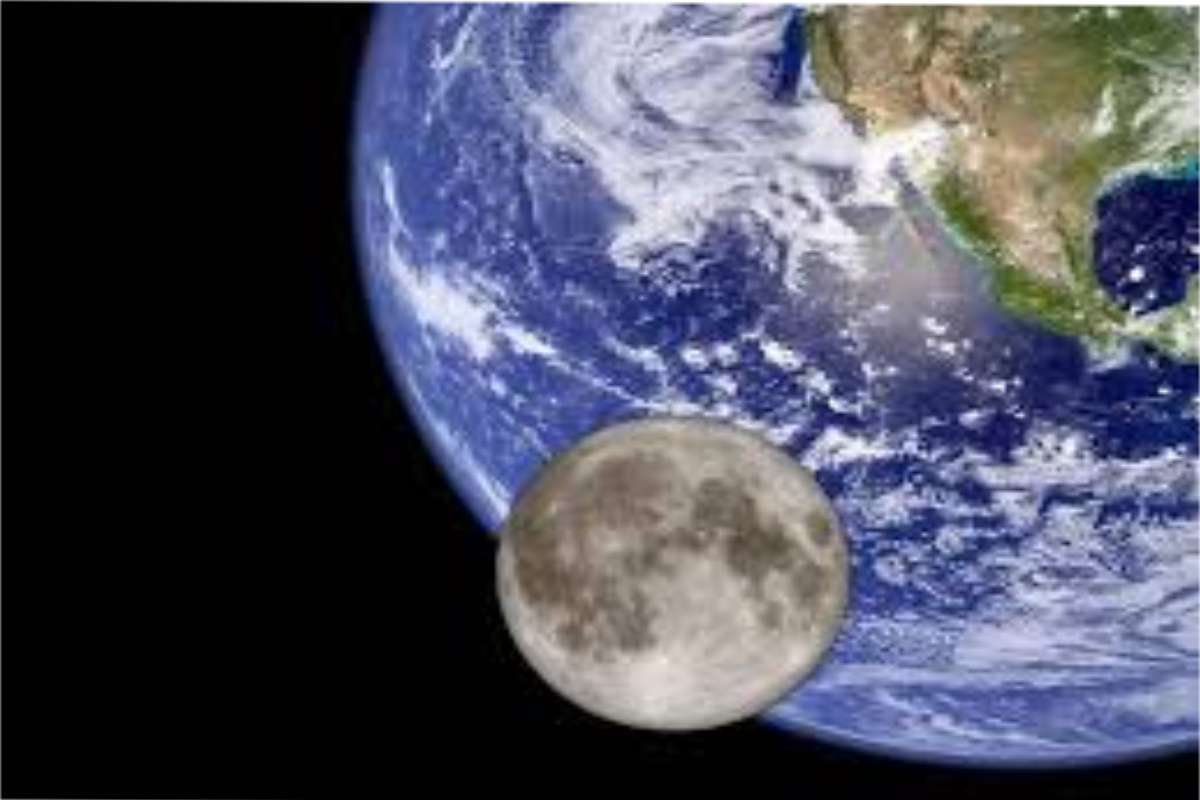What is the Moon?
The Moon is the brightest celestial body in the night sky. On full moon nights, it shines so bright that some people have trouble sleeping.
It appears as big as the sun, and the stars look like little light points next to it.
But the impression is deceptive. In reality, the Moon (diameter: 3474 km) is only about a quarter the size of the earth (12742 km) – and the sun (1.39 million km) is even four hundred times larger.
The Moon only appears the same size to us because it is so close to us.
The sun (distance to the earth about 150 million km) is also about four hundred times further away than the Moon.
(384,400 km, an airplane needs 18 days for this distance!)
The bright light is also deceptive. The Moon does not sparkle by itself but is illuminated by the sun.
Some of this light is then reflected from the surface of the Moon and hits the earth.
Just because it is so close to us, enough light arrives on earth to brighten up the night.
Earth has one, and Mars has two; Jupiter and Saturn even over sixty each! Only 2 planets in the solar system have to do without moons: Mercury and Venus; all other planets have at least one Moon.
The Moon – our closest neighbor
- It is true that when we talk about the Moon, we think of it, which is rising and waxing.
- It is enormous in the sky in the first hours of the evening and circles the earth as a satellite.
- But of course, there are more because moons are all-natural bodies that orbit around planets.
- Most moons are tiny in direct comparison with their mother planet, but our Moon is relatively large.
- The Moon has always held a great attraction for humanity. The ancient Romans and Greeks worshiped the Moon as their goddess.
- The Mayans even believed that their moon goddess had been driven out in an argument with the sun god and could only be seen at night.
- Even today, we still speak of the “man in the moon.” But what makes this heavenly body that has drawn us so much under its spell?
It is lighter and smaller than our planet
- The Moon is made of rock, covered by a 15-centimeter thick layer of dust. Also, it has no atmosphere. All of this means that there is no life on the Moon.
- By the way, because of the lack of atmosphere, we couldn’t talk to each other on the Moon. There is no sound!
- The dimensions of it are smaller than here on earth. Its diameter is 3,476 kilometers, around a quarter of the diameter of the planet.
- It’s also much lighter than our home planet. To get the same weight, it would take 81 moons.
- Even if it is so conspicuous at night, it cannot generate any brightness itself. In reality, it just reflects the sunlight that hits it.
Influences of the Moon
- The Moon influences our lives every day. We owe it, for example, the ebb and flow tidewater on the side of the earth that faces it is drawn towards it and repelled by the opposite side.
- You can take a closer look at that on a day at the North Sea, for example. The effect on humans, who consist of over 60 percent water, has not yet been proven.
- But many people complain that they sleep worse or even sleepwalk when it is full.
- The spots we see from the earth are mountains and valleys with numerous craters.
- They were created when numerous boulders, called asteroids, which fly through space, hit the Moon and left deep traces.
- On the side facing the earth alone, they left over 300,000 craters, each with a diameter of more than one kilometre. Most noticeable is the Copernicus Crater.
- It has existed for 800 million years.
Trip to the Moon
- Three astronauts flew to the earth’s satellite for the first time in 1969 on a space shuttle to explore it more closely.
- On July 21, the American Neil Armstrong was the first person to walk on the Moon and utter the familiar phrase,
- “This is a small step for me, but a great leap for mankind.”
- Nineteen (19) minutes later, his colleague Edwin Aldrin followed him from the lunar module.
- The Moon’s gravity is six (6) times weaker than that of the earth.
- It means that everything and everyone there weighs only one-sixth and can therefore move more quickly.
- The astronauts could jump six times higher than usual.
- Millions of viewers were able to watch the jumping and hopping off the cosmos pioneers on television.
- The great thing is that the footprints are still visible today. Since there is neither wind nor rain on it, they will never blur.
- While the third astronaut Michael Collin,s on the mission, stayed in the spaceship.
- Armstrong and Aldrin photographed the landscape for two and a half hours, collected rock and soil samples, and set up the first scientific equipment.
- Some of the transmitters installed are still transmitting data today.
- This first Apollo mission was followed by five more. Until 1972, the last landing, twelve people had set foot on the Moon.
- On the last three missions, the astronauts even had a small moon car at their disposal, with which they could travel 90 kilometres.
- A statue commemorates the 14 astronauts who perished on previous missions to the Moon. It was erected on it in August 1971 by the crew of Apollo 15.

